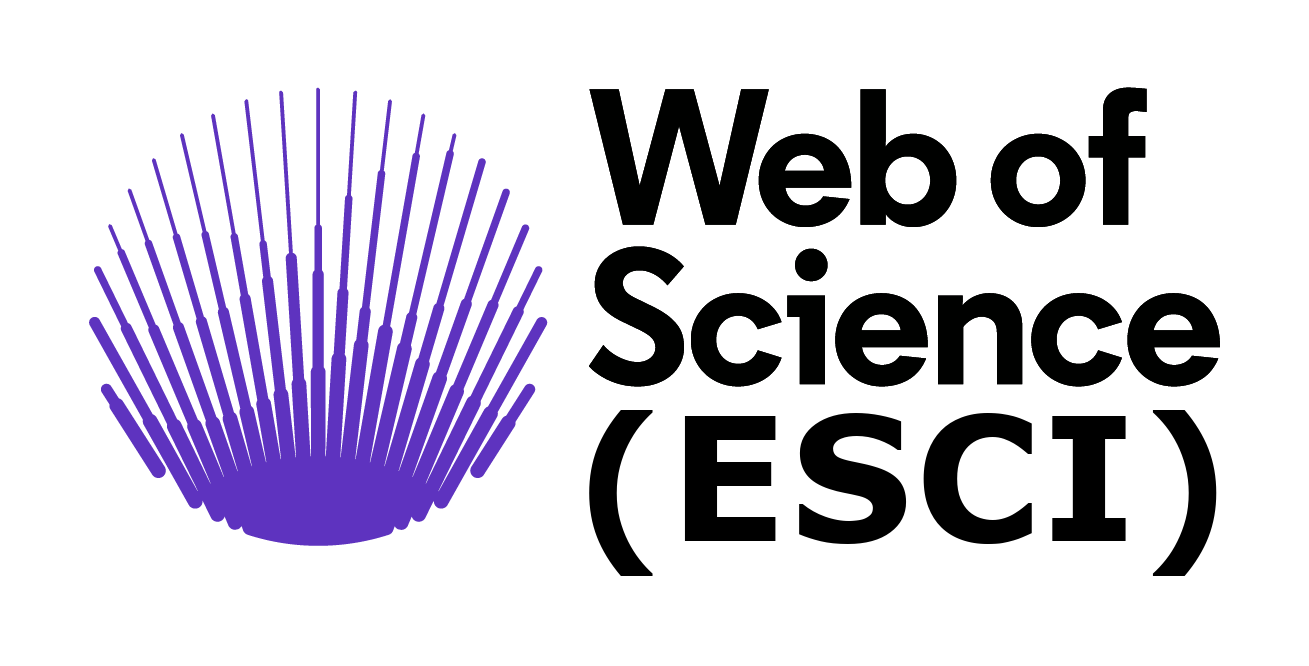Desarrollo y evaluación de la formulación de un biofertilizante basado en el complejo Anabaena-Azolla
DOI:
https://doi.org/10.29019/enfoqueute.1115Palabras clave:
Bioinsumo, Anabaena, Azolla, Cianobionte, NitrógenoResumen
La seguridad en la producción agrícola es uno de los parámetros cruciales para las frutas y hortalizas, que se consigue a través de la agricultura sostenible. En este estudio se evaluó la cianobacteria Anabaena en simbiosis con la planta Azolla sp, para el desarrollo de un biofertilizante. Se recolectaron muestras en Cusubamba, Pichincha, y se probaron siete medios de cultivo con diferentes aportes nutricionales. En el estudio de Azolla se analiza el peso inicial y el peso final para medir el crecimiento, el tiempo para evaluar el desarrollo y el área de cultivo, que determina la superficie disponible para la determinación de biomasa. El conjunto de estas variables permite evaluar el rendimiento y la sostenibilidad de Azolla. El mejor tratamiento fue T2 (Nitrofoska 1g), alcanzando 66,59 g de peso fresco, una tasa de crecimiento de 3,83 g/d y un tiempo de duplicación de 5,96 días. El método Dumas mostró que el T2 concentraba aproximadamente un 5% de nitrógeno. El biofertilizante cumplió con las características y normas de calidad de la Agencia de Regulación y Control Fitosanitario y Zoosanitario (Agrocalidad-Ecuador), como la ausencia de microorganismos patógenos y la presencia de macro y micronutrientes como el nitrógeno, que presentó un porcentaje promedio de 1,54%, además de parámetros físicos moderadamente óptimos como un pH de 4,68 y una densidad de 0,016 g/mL.
Descargas
Citas
[1] J. Paladines, “Analysis of the income and trade balance of the agricultural sector in the Ecuadorian economy in the period 2019-2020,” 2021.
[2] J. Carrión, “Analysis of Ecuadorian Agricultural Gross Domestic Product,” Scientific Journal, vol. 6, no. 4, pp. 940-952, 2020.
[3] M. K. Bhatt, R. Labanya, and H. C. Joshi, “Influence of Long-term Chemical fertilizers and Organic Manures on Soil Fertility - A Review,” J Agric Res Universe, vol. 7, no. 5, pp. 177-188, Sep. 2019. https://doi.org/10.13189/ujar.2019.070502
[4] E. Vásquez, G. N. Abad-Calva, C. G. Angamarca-Angamarca and Y. A. Calle-Herrera, “Generation of nitrogen through the symbiotic production azolla–anabaena in the canton of Loja,” Zero Latitude Forests, vol. 13, no. 2, pp. 91-103, Jul. 2023. https://doi.org/10.54753/BLC. V13I2.1858
[5] M. Benimeli et al., “Soil Nitrogen,” Tucumán, 2019. [Online]. Available: www.edafologia.com.arwww.edafologia.org
[6] A. Jama, D. P. Widiastuti, S. Gafur and J. G. Davis, “Azolla Biofertilizer Is an Effective Replacement for Urea Fertilizer in Vegetable Crops,” Sustainability (Switzerland), vol. 15, no. 7, 2023. https://doi.org/10.3390/SU15076045
[7] S. Abin, D. Palengara and P. Majeti, “Azolla Farming for Sustainable Environmental Remediation,” Handbook of Assisted and Amendment-Enhanced Sustainable Remediation Technology, no. May, pp. 517-533, 2021. https://doi.org/10.1002/9781119670391.ch25
[8] B. Schneider, H. R. Hadad and E. E. Rodriguez, “Aquatic Plants of the Middle Paraná River,” 2021.
[9] A. L. Pereira and F. Carrapiço, “A fluorescence method to detect cyanophycin in the symbiotic cyanobacterium, Anabaena azollae,” Biotechnic & Histochemistry, vol. 98, no. 4, pp. 291-295, May 2023. https://doi.org/10.1080/10520295.2023.2182452
[10] R. P. Rastogi, “Ecophysiology and Biochemistry of Cyanobacteria,” Ecophysiology and Biochemistry of Cyanobacteria, pp. 1-478, Jan. 2022. https://doi.org/10.1007/978-981-16-4873-1/COVER
[11] N. Mishra, “Cyanobacterial symbiotic interaction in pteridophytes,” Microbial Symbionts: Functions and Molecular Interactions on Host, pp. 3-13, Jan. 2023. https://doi.org/10.1016/B978-0-323-99334-0.00005-0
[12] H. J. Sánchez Sánchez, “Cultivation of microalgae in a residual aquaculture effluent for biomethane production,” Sep. 2023, Accessed: Aug. 26, 2024. [Online]. Available: https://rinacional.tecnm.mx/jspui/handle/TecNM/6582
[13] Corporación Autónoma Regional de Cundinamarca CAR, “Plan for the Prevention, Control and Management of the species Azolla filiculoides L (Water fern) in the jurisdiction of the Corporación Autónoma Regional de Cundinamarca CAR,” 2022, Accessed: Aug. 25, 2024. [Online]. Available: https://www.car.gov.co/uploads/files/64260164e4360.pdf
[14] E. J. Manrique, “Acceptability criteria for the commercialization of the organic fertilizer Azolla caroliniana willd 1810 prepared by the agricultural association of montubios San Vicente,” Manabí, Feb. 2020.
[15] G. Verma et al., “Implications and Future Prospects of Azolla as a Low-Cost Organic Input in Agriculture,” Agricolation, vol. 1, no. 6, pp. 1-7, 2022, [Online]. Available: www.agricolation.com
[16] J. Guío Martínez, “Nuevas funciones de las proteínas Fur en el metabolismo del nitrógeno de Anabaena PCC7120 y su posible actuación como sensores del balance carbono/nitrógeno”, M.S. thesis, Depto. de Bioquímica y Biología Molecular, Univ. de Zaragoza, Zaragoza, España, 2019. [Online]. Available: https://zaguan.unizar.es/record/86838/files/TAZ-TFM-2019-276.pdf
[17] K. Adhikari, S. Bhandari and S. Acharya, “An overview of azolla in rice production: A review,” Reviews in Food and Agriculture, vol. 2, no. 1, pp. 04-08, Dec. 2020. https://doi.org/10.26480/RFNA.01.2021.04.08
[18] M. R. Aczel, “What Is the Nitrogen Cycle and Why Is It Key to Life?,” Front Young Minds, vol. 7, no. March, pp. 1-9, 2019. https://doi.org/10.3389/frym.2019.00041
[19] L. García, “Importance of zeolite on the efficiency of nitrogen fertilizers, to increase yields in rice cultivation (Oryza sativaL.) in Ecuador,” Los Ríos, 2020.
[20] H. Reyes Palma, “Azolla Anabaena as an alternative supplement to feed tilapia (oreochromisniloticus) and lower production costs,” Babahoyo, 2021.
[21] G. E. Viteri Jiménez, “Evaluation of dose and time of application of azolla extract (Anabaena azollae) in the cultivation of broccoli (Brassica oleracea Var. italica),” 2023, Accessed: Aug. 24, 2024. [Online]. Available: https://repositorio.uta.edu.ec:8443/jspui/handle/123456789/39765
[22] B. L. Bianchini, G. L. de Lima and E. Gomes, “The TMCC in the Review of the Study of Function in an Engineering Problem,” Tecné, Episteme and Didaxis: TED, no. 56, pp. 275-300, Jul. 2024. https://doi.org/10.17227/ted.num56-18773.
[23] Food and Agriculture Organization of the United Nations, “Standard Operating Procedure for Soil Nitrogen: Kjeldahl Method”, Global Soil Laboratory Network (GLOSOLAN), Rome, Italy, Jan. 2021. [Online]. Available: https://openknowledge.fao.org/server/api/core/bitstreams/17a0e476-f796-4608-a869-295a367c0b56/content
[24] A. Cardozo, V. El Mujtar, V. Álvarez and S. Cáceres, “Manual for the Elaboration of Biofertilizer from Agricultural Waste.” [Online]. Available: www.fontagro.org
[25] Y. Wang, M. Gao, H. Chen, Y. Chen, L. Wang and R. Wang, “Fertigation and Carboxymethyl Cellulose Applications Enhance Water-Use Efficiency, Improving Soil Available Nutrients and Maize Yield in Salt-Affected Soil,” Sustainability (Switzerland), vol. 15, no. 12, 2023. https://doi.org/10.3390/SU15129602
[26] M. Rea Naranjo, “Specific Test Procedure (Reference Paper)” Accessed: Nov. 16, 2024. [Online]. Available: https://www.agrocalidad.gob.ec/wp-content/uploads/2023/03/REFERENCIAS-DE-M%C3%89TODOS-AN%C3%81LISIS-FERTILIZANTES-2023.pdf
[27] S. Kailash, “Azolla Biofertilizer – The Nature’s Miracle Gift for Sustainable Rice Production,” Journal Home, vol. 2, no. 9, pp. 971-973, 2020, [Online]. Available: www.bioticainternational.com
[28] E. Morales, R. Martinez and G. Suárez, “View of Isolation, Culture, Viability and Evaluation of a Cyanobacteria-Microalgae Consortium as a Soil Conditioner,” Biotechnology, ESPE, Quito, 2014. Accessed: Dec. 14, 2023. [Online]. Available: https://remcb-puce.edu.ec/remcb/article/view/249/196
[29] A. L. Pereira, B. Monteiro, J. Azevedo, A. Campos, H. Osório and V. Vasconcelos, “Effects of the naturally-occurring contaminant microcystins on the Azolla filiculoides–Anabaena azollae symbiosis,” Ecotoxicol Environ Saf, vol. 118, pp. 11-20, Aug. 2015. https://doi.org/10.1016/J.ECOENV.2015.04.008
[30] D. Del Castillo et al., “Development of a hybrid cell for energy production,” Nanotechnology, vol. 32, no. 41, p. 415401, Jul. 2021. https://doi.org/10.1088/1361-6528/AC0C3E.
[31] D. Mishra, S. Rajvir, U. Mishra and S. Kumar, “Role of Bio-Fertilizer in Organic Agriculture: A Review,” Research Journal of Recent Sciences, vol. 2, no. 2013, pp. 39-41, 2013, [Online]. Available: http://isca.in/rjrs/archive/special_issue2012/8.ISCA-ISC-2012-1AFS-32.pdf
[32] A. Bujak and J. Bujak, “Azolla’s Use as a Biofertilizer and Livestock Feed,” Ferns: Biotechnology, Propagation, Medicinal Uses and Environmental Regulation, pp. 671-695, Jan. 2022. https://doi.org/10.1007/978-981-16-6170-9_29/COVER.
[33] E. P. Valle Acaro, “Evaluation of the behavior of Azolla Anabaena (Azolla filiculoides Var. Cristata) under different doses of organic substrate in Santa Elena Ecuador,” 2024. Accessed: Nov. 16, 2024. [Online]. Available: https://repositorio.upse.edu.ec/bitstream/46000/10887/1/UPSE-TIA-2024-0015.pdf
[34] E. Vásquez, G. N. Abad-Calva, C. G. Angamarca-Angamarca and Y. A. Calle-Herrera, “Generation of nitrogen through the symbiotic production azolla–anabaena in the canton of Loja,” Zero Latitude Forests, vol. 13, no. 2, pp. 91-103, Jul. 2023. https://doi.org/10.54753/blc.v13i2.1858
[35] L. González, R. Félix, J. Sandoval, D. Escobedo and R. Longoria, “Characterization of biofertilizers used in the agricultural valley of Guasave, Sinaloa, Mexico,” Terra Latinoamericana Magazine, vol. 39, pp. 1-14, 2021. https://doi.org/10.28940/terra.v39i0.859
[36] E. Pérez and D. Rodríguez, “Physico-chemical study for the formulation of a liquid fertilizer of complete composition,” 2017. https://doi.org/10.15517/PA.V17I29.31551
[37] N. Ndraha, H. Y. Lin, S. K. Tsai, H. I. Hsiao and H. J. Lin, “The Rapid Detection of Salmonella enterica, Listeria monocytogenes, and Staphylococcus aureus via Polymerase Chain Reaction Combined with Magnetic Beads and Capillary Electrophoresis,” Foods 2023, vol. 12, no. 21, p. 3895, Oct. 2023. d https://doi.org/10.3390/FOODS12213895
Descargas
Publicado
Cómo citar
Número
Sección
Licencia
Derechos de autor 2025 Los Autores

Esta obra está bajo una licencia Creative Commons Reconocimiento 3.0 Unported.
Los artículos e investigaciones publicadas por la Universidad UTE, se realizan en régimen de Acceso Abierto [Open Access] en formato electrónico. Esto significa que todo el contenido está disponible de forma gratuita sin costo para el usuario o su institución. Los usuarios pueden leer, descargar, copiar, distribuir, imprimir, buscar o enlazar los textos completos de los artículos, o usarlos para cualquier otro propósito legal, sin necesidad de pedir permiso previo al editor o al autor. Esto está de acuerdo con la definición de acceso abierto de la Iniciativa de Acceso Abierto de Budapest (BOAI). Al enviar un artículo a cualquiera de las revistas científicas de la Universidad UTE, el o los autores aceptan estas condiciones.
La UTE aplica la licencia Creative Commons Attribution (CC-BY) a los artículos de sus revistas científicas. En virtud de esta licencia de acceso abierto, como autor usted acuerda que cualquier persona puede reutilizar su artículo en su totalidad o en parte para cualquier propósito, de forma gratuita, incluso para fines comerciales. Cualquiera puede copiar, distribuir o reutilizar el contenido siempre y cuando el autor y la fuente original estén correctamente citados. Esto facilita la libertad de reutilización y también asegura que el contenido pueda ser extraído sin barreras para necesidades de investigación.
Esta obra está bajo una Creative Commons Attribution 3.0 International (CC BY 3.0).
Además, la Revista Enfoque UTE garantiza y declara que los autores conservan siempre todos los derechos de autor y todos los derechos de publicación sin restricciones [© Los Autores]. El reconocimiento (BY) permite cualquier explotación de la obra, incluyendo una finalidad comercial, así como la creación de obras derivadas, la distribución de las cuales también está permitida sin ninguna restricción.






















 Enfoque UTE - Facultad de Ciencias de la Ingeniería e Industrias - Universidad UTE
Enfoque UTE - Facultad de Ciencias de la Ingeniería e Industrias - Universidad UTE